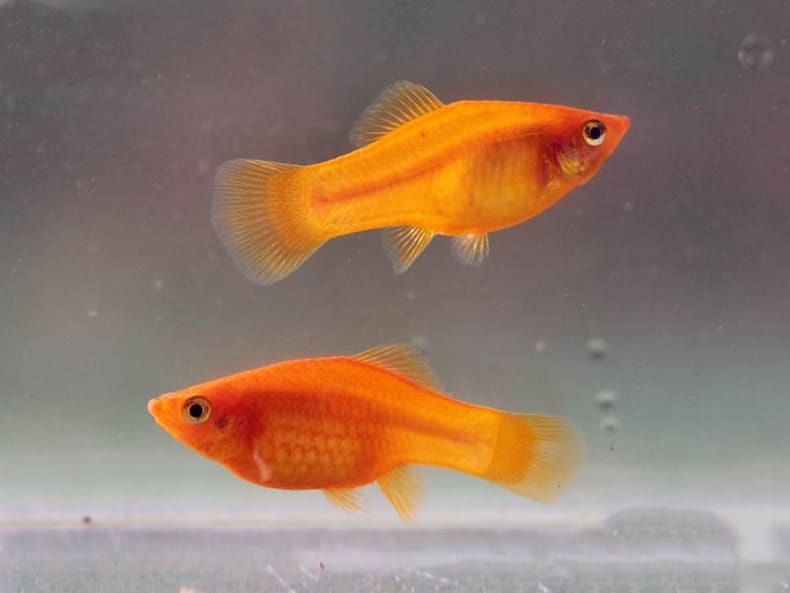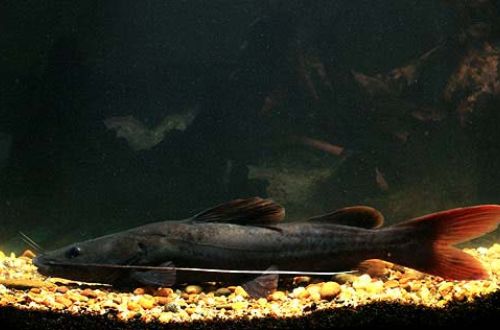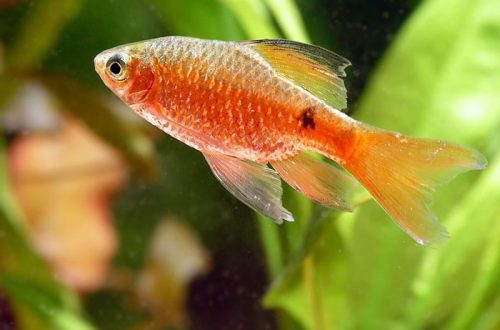
yellow pecilia
Yellow or Golden Platy, trade English name Yellow / Gold Platy. It is a breeding variety of the common Pecilia (Xiphophorus maculatus), not found in nature. As it becomes clear from the name, a distinctive feature of this fish is a solid uniform yellow color of the body and fins.
If there are additional colors in the coloration, for example, black speckles or a red gradient in the tail area, then this indicates belonging to another variety. However, some sellers ignore such differences, calling everyone the same, based only on the dominant color and not paying attention to other features in the color.
In fairness, it should be noted that errors in the name do not matter in the content.
Brief information:
- The volume of the aquarium – from 60 liters.
- Temperature – 20-28°C
- Value pH — 7.0–8.2
- Water hardness – medium to high hardness (10-30 GH)
- Substrate type – any
- Lighting – moderate or bright
- Brackish water – acceptable at a concentration of 5-10 grams per liter of water
- Water movement – light or moderate
- The size of the fish is 5–7 cm.
- Food – any food
- Temperament – peaceful
- Content alone, in pairs or in a group
Maintenance and care

Along with Guppies and Swordtails, the Yellow Pecilia is considered undemanding and easy to keep. For 3-4 fish, an aquarium with a volume of 60-70 liters is enough, and in the design it is desirable to provide places for shelters, for example, thickets of plants.
It is important to provide and maintain clean, warm water with medium to high GH values. It is acceptable to stay in brackish water for a long time.
Aquarium maintenance procedures are standard and include weekly replacement of part of the water with fresh water, cleaning of design elements from plaque, and timely removal of organic waste (food leftovers, excrement).
Food. Pecilia is an omnivorous species, will accept most popular foods: dry flakes, granules, frozen or live brine shrimp, bloodworms, daphnia, mosquito larvae and similar products. For a balanced diet, feed should contain herbal supplements.
behavior and compatibility. Males compete with each other for position in the internal hierarchy and the attention of females, so in a small aquarium it is desirable that there are more females than males. With regard to other species, they are peacefully set up, compatible with many popular freshwater fish of comparable size and temperament.
Breeding / reproduction. Prolific and easy breeding fish. In a favorable environment, each female can produce up to 80 fry every 4–6 weeks. There is no care for offspring. Adult fish are prone to predation in relation to juveniles, so it is recommended to transplant fry into a separate tank.





